Discover 20 hidden attractions, cool sights, and unusual things to do in Cádiz (Spain). Don't miss out on these must-see attractions: Cádiz Cathedral, Castillo de Santa Catalina, and Monument to Moret. Also, be sure to include Castle of San Sebastián in your itinerary.
Below, you can find the list of the most amazing places you should visit in Cádiz (Andalusia).
Table of Contents
Cádiz Cathedral
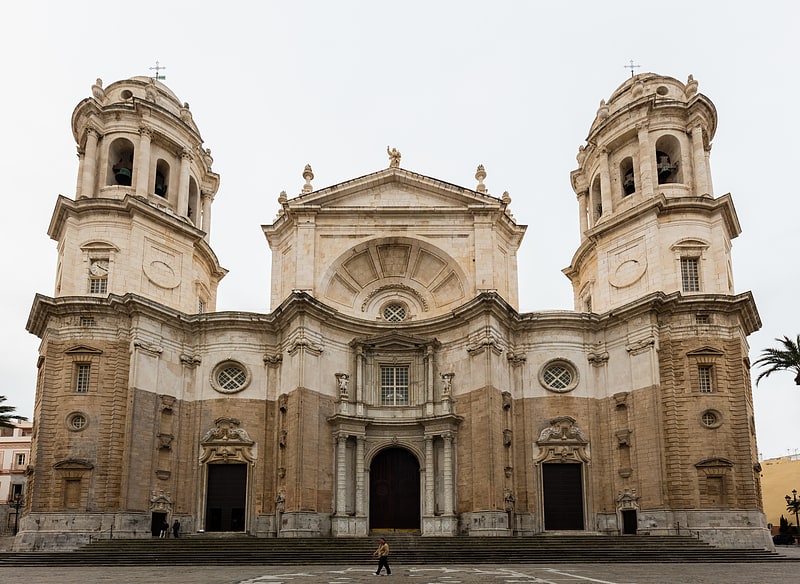
Also known as: Catedral de la Santa Cruz de Cádiz
Baroque cathedral with a panoramic tower. Cádiz Cathedral is a Roman Catholic church in Cádiz, southern Spain, and the seat of the Diocese of Cadiz y Ceuta. It was built between 1722 and 1838. The cathedral was declared Bien de Interés Cultural in 1931.
The Plaza de la Catedral houses both the Cathedral and the Baroque Santiago church, built in 1635.
The church was known as "The Cathedral of The Americas" because it was built with money from the trade between Spain and America. The 18th century was a golden age for Cádiz, and the other cathedral that the city had got, Santa Cruz, was very small for this new moment of Cádiz. The new cathedral was built from 1722 to 1838. The first person who designed the church was architect Vicente Acero, who had also built the Granada Cathedral. Acero left the project and was succeeded by several other architects. As a result, this largely baroque-style cathedral was built over a period of 116 years, and, due to this drawn-out period of construction, the cathedral underwent several major changes to its original design. Though the cathedral was originally intended to be a baroque edifice, it contains rococo elements, and was finally completed in the neoclassical style. Its chapels have many paintings and relics from the old cathedral and monasteries from throughout Spain.
In the crypt are buried the composer Manuel de Falla and the poet and playwright José María Pemán, both born in Cádiz.
Levante Tower, one of the towers of Cádiz Cathedral, is open to the public and shows panoramas of the city from on high.[1]
Address: Plaza de la Catedral, s/n, 11005 Cádiz
Castillo de Santa Catalina

1600s fort and gallery with sea views. The Castle of Santa Catalina is a castle located in Cádiz, Spain. It was declared Bien de Interés Cultural in 1993.[2]
Address: C. Campo de las Balas, s/n, 11002 Cádiz
Monument to Moret
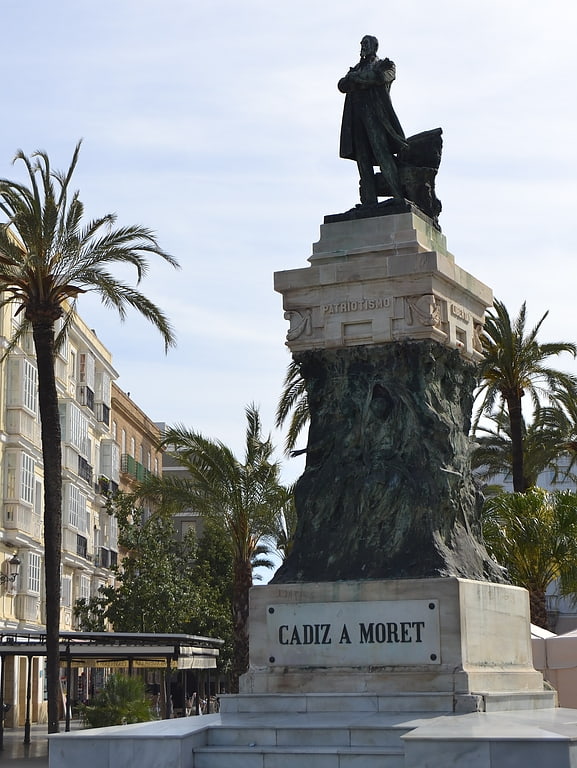
The Monument to Moret is an instance of public art in Cádiz, Spain. Designed by Agustín Querol, it consists of a bronze statue of Liberal politician Segismundo Moret put on top of a pedestal displaying elaborated allegorical reliefs.[3]
Castle of San Sebastián
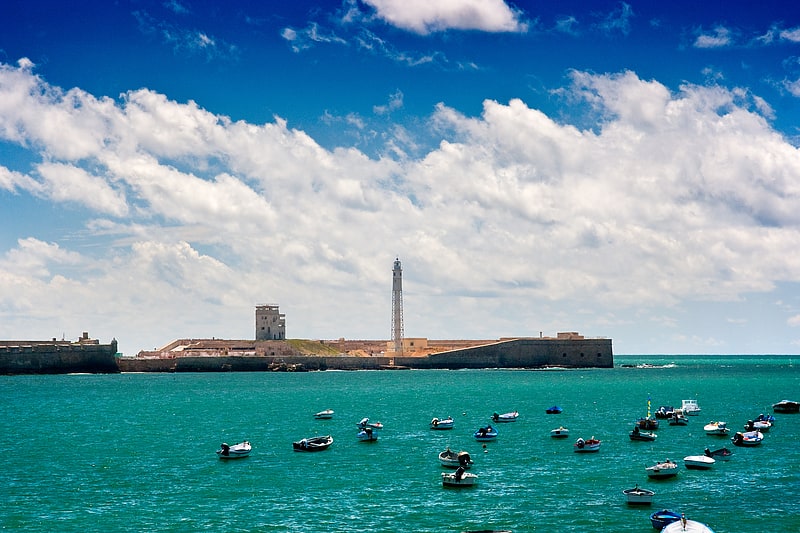
Also known as: Castillo de San Sebastián
Exhibit and event space in an old fortress. The Castle of San Sebastián is a fortress located in Cádiz, Spain, at the end of La Caleta beach on a small island separated from the main city. It was declared Bien de Interés Cultural in 1993.[4]
Museo de Cádiz
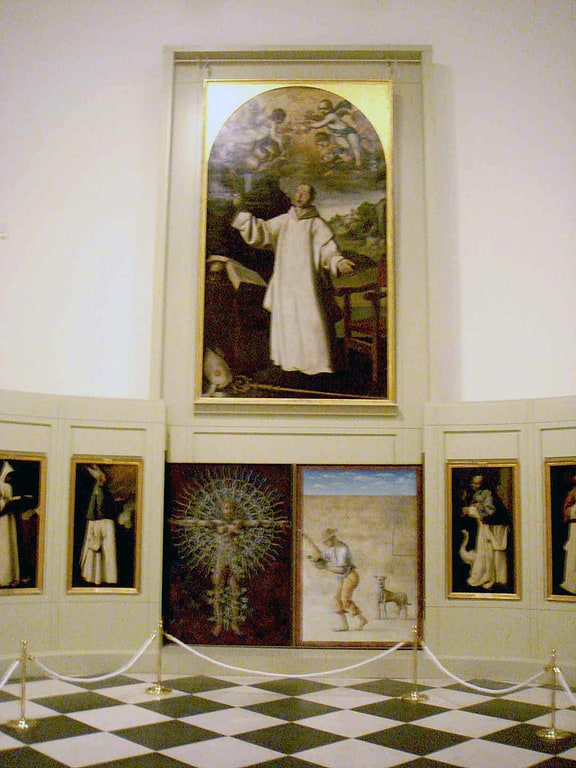
Museum in Cádiz, Spain. The Museum of Cadiz is a museum located in Cádiz, Spain. It was founded in 1970 after the merger of the Provincial Museum of Fine Arts with the Provincial Museum of Archaeology. It is on three floors, archaeology on the ground floor, art on the first, and puppets on the second floor. Entry is free for citizens of the European Union.
The origin of the museum came in 1835, when art was confiscated from a monastery, including paintings by Zurbarán taken from the Charterhouse of Jerez de la Frontera. Other paintings included the works of Murillo and Rubens. The collection grew during the century, due to the city's Academy of Fine Arts which practised romanticism and neoclassicism. In 1877, after a Phoenician sarcophagus was found in the city's shipyard, the Archaeological Museum was founded. However, it was not until 1970 that the two institutes, despite sharing the same building, were merged. From 1980, the architect Javier Feduchi planned a reform of the building in three phases, of which two have been completed.
In addition to the 19th-century pieces, the art museum has received contemporary art from the Junta de Andalucía. Its archaeological section has also received donations, particularly of coins. Despite a range of prehistoric findings from Southern Andalusia, due to local history, it has a lack of artefacts from the Middle Ages. The "Tía Norica" set of puppets, used at the Carnival of Cádiz, was acquired by the State.[5]
Address: Plaza Mina s/n, 11004 Cadiz
Roman Theatre
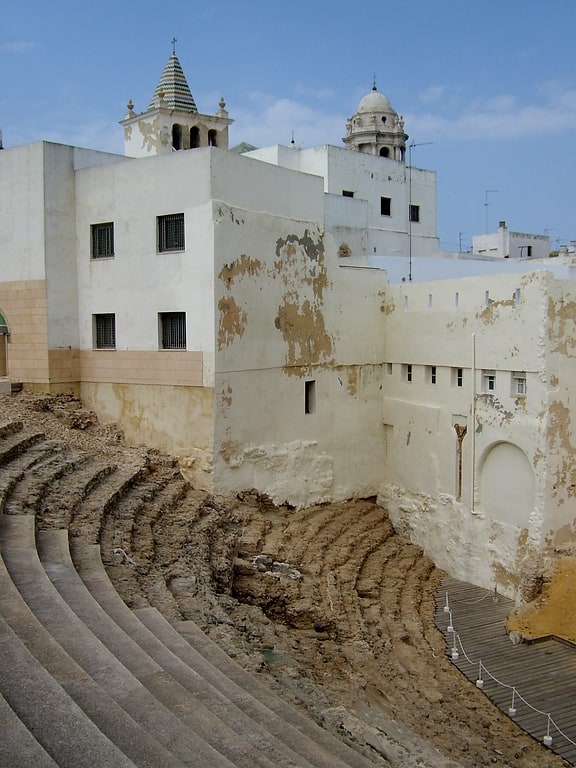
Also known as: Teatro romano de Cádiz
Site with ruins of huge ancient theater. The Roman theatre of Cádiz is an ancient structure in Cádiz, Andalusia, in southern Spain. The remains were discovered in 1980. The theatre, which was likely built during the 1st century BC and was one of the largest ever built in the Roman empire, was abandoned in the 4th century and, in the 13th century, a fortress was built on its ruins by order of King Alfonso X of Castile.
The theatre featured a cavea with a diameter of more than 120 meters, and could house some 10,000 spectators. The theatre was one of the few Roman structures of ancient Hispania mentioned by classical authors, including Cicero and Strabo. Excavations in the site have also found remains of a quarter dating to the taifa period, Almohad houses and 17th century pits.[6]
Address: El Populo, Cádiz
Gran Teatro Falla
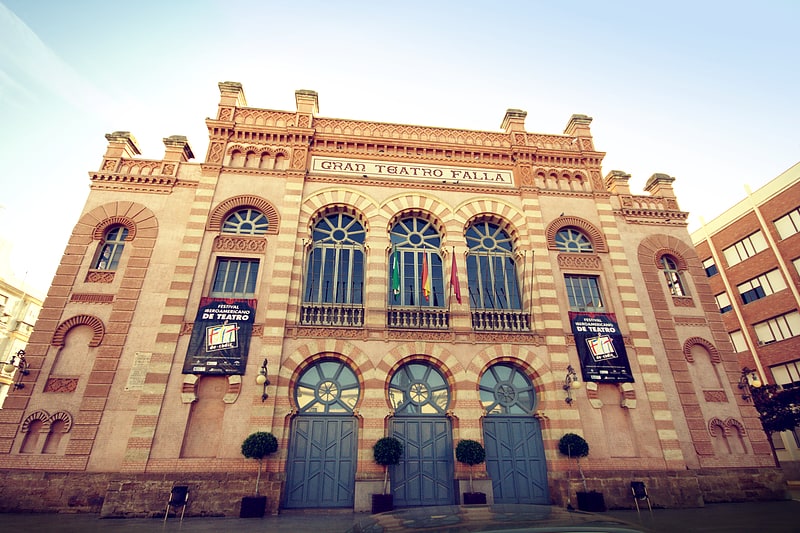
Theater in Cádiz, Spain. The Gran Teatro Falla is a theater in the city of Cádiz, Andalusia, Spain. It is located in the Plaza Fragela, facing the Casa de las Viudas and adjacent to the Faculty of Medicine of the University of Cádiz.
Construction of the theater began in 1884, following plans by architect Adolfo Morales de los Ríos. It was based on the foundation of the previous Gran Teatro de Cádiz, a wooden building designed by García del Álamo and built in 1871, but which had burned in 1881. In 1886 the city government took over direction of the project, which proceeded only intermittently due to lack of funds. The theater was completed in 1905. Municipal architect Juan Cabrera de la Torre made significant modifications to Morales's original plans. The theater was known as the "Gran Teatro" until 1926 when it was renamed for composer and native son Manuel de Falla.
Built in the Neo-Mudéjar style, it is made of red brick, and has three grand horseshoe arch entry doorways on its principal façade, with alternating red and white voussoirs. One enters through these doors into a large vestibule, which was redesigned in the 1920s. Stairways ascend to the horseshoe or "U"-shaped galleries above. The stage is 18 metres (59 ft) wide and 25.5 metres (84 ft) deep. The ceiling shows an allegory of Paradise, the work of Felipe Abarzuza y Rodríguez de Arias.
Every February the Gran Teatro Falla is the site of the artistic competitions of the Carnival of Cádiz. During repairs and restoration from 1987 to 1991, those competitions were held instead at the now-defunct Teatro Andalucía. Through the rest of the year, the theater hosts all manner of shows, such as plays or concerts.[7]
Address: Plaza Falla, 6, 11003 Cádiz
La Pepa Bridge
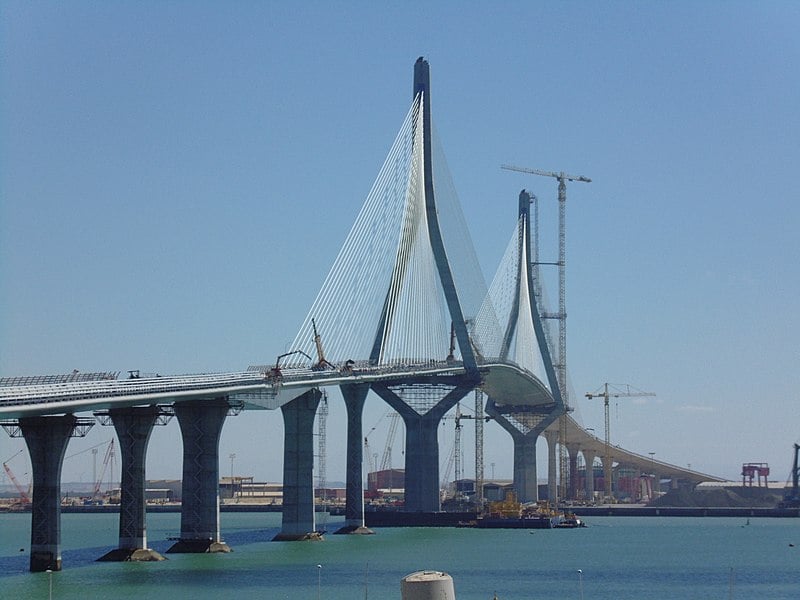
Also known as: Puente de la Constitución de 1812
Cable-stayed bridge in Spain. The Constitution of 1812 Bridge, also known as La Pepa Bridge, is a new bridge across the Bay of Cadiz, linking Cadiz with Puerto Real in mainland Spain.
Cadiz's first bridge, the Carranza bridge, was inaugurated in 1969, and is now crossed by some 40,000 vehicles per day. In 1982 the Spanish government accepted the need for a second bridge.
It has two 180 m pylons, one in the sea and the other in Cabezuelas Harbour, a 540-meter span and 69 meters of vertical clearance. The bridge also includes a 150-meter removal span.
It is the second bridge that crosses over to Cádiz from the mainland, after Carranza bridge, and one of the highest bridges in Europe, with a gauge of 69 meters and a total length of 5 kilometers. It is the third access to the city, along with the isthmus San Fernando and the Carranza bridge. Given the large width of the deck, it will be a high capacity bridge: a motorway with two lanes in each direction and two lanes reserved for metropolitan public transport such as the Cádiz Bay tram-train.
The bill was drafted by the civil engineer Javier Manterola. The works were scheduled for completion in 2012, coinciding with the bicentenary of the Spanish Constitution of 1812, which was drafted in Cádiz. However, due to cuts in public works resulting from the economic crisis at the time, the work was more than three years late.
By summer 2013 work had progressed but at a slower pace. As of early 2014 work progressed at a good pace, highlighting the installation of its cable-stayed span and the hiring of more daily staff (including night shifts). As of the first half of 2015, the bridge structure was completed, with full completion in September of the same year.
As data highlights:
- The earlier draft described an arch bridge whose total length was 2.355 km.
- The total length of the current project, viaducts and links is 5 kilometers: 3096 meters on the bridge of which 1655 meters will be over the sea, with a main span of 540 meters record of Spain, with one hundred meters more than the bridge engineer Carlos Fernández Casado, the famous civil engineer, the reservoir Barrios de Luna. Besides the vain is the third largest in Europe suspended class, after Rio-Antirio Bridge and Normandy Bridge.
- The maximum height above the sea level is 69 meters, with two pylons of 187 meters, making it one of the tallest bridges in Europe.
- They are 30 meters higher than the pylons between both sides of the bay.
The bridge connects the San Pedro River (district) in Puerto Real with the |neighborhood of La Paz in Cadiz.[8]
Parroquia de Santa Cruz
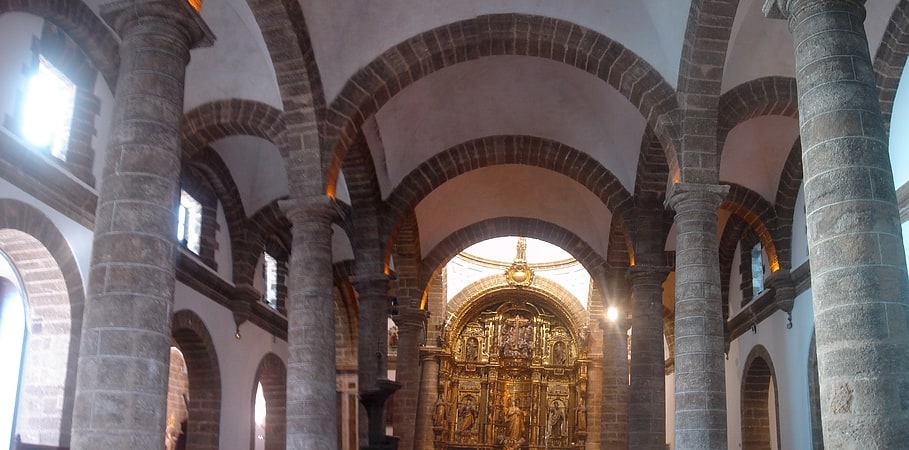
The Church of the Holy Cross is a Roman Catholic church in the Spanish city of Cádiz. It was the cathedral of the Diocese of Cádiz y Ceuta between 1602 and 1838, when the new Cádiz Cathedral was completed.
Originally built in 1262 after the conquest of the city by Alfonso X, it was completely rebuilt by 1602 after the first building was burned down by a combined Anglo-Dutch fleet commanded by Admiral Edward Howard, who sacked Cádiz in 1596.[9]
Arco de los Blanco

Historical landmark in Cádiz, Spain. Arco de los Blanco is an archway of the Castillo de la Villa in Cádiz, southern Spain. It has been declared a Bien de Interés Cultural site.[10]
Arco del Pópulo
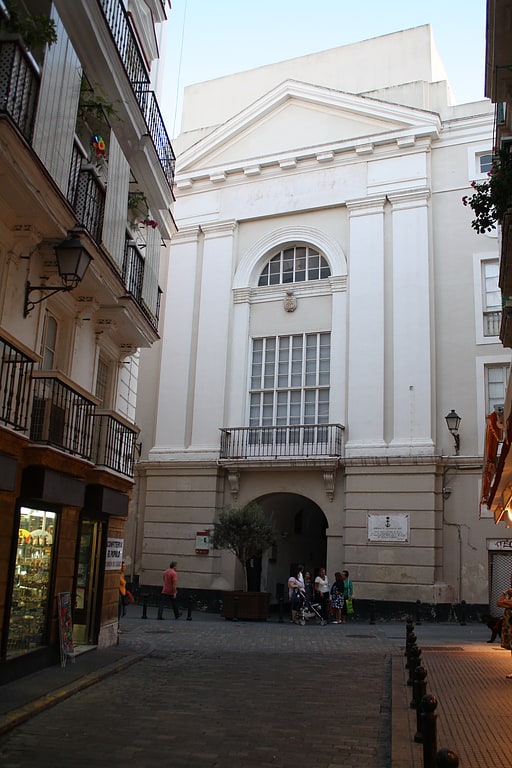
Tourist attraction in Cádiz, Spain. Arco del Pópulo is an archway of the city of Cádiz, southern Spain. It has been declared a Bien de Interés Cultural site.
The Arco del Pópulo in the city of Cádiz (Spain) is the primitive Puerta del Mar, because it accessed the port area, and was flanked by two cubes. At the beginning of the 17th century, the chapel of Nuestra Señora del Pópulo was built before it, which has given it the appearance of a passageway that it presents today. The characteristics of the interior wall match the building techniques of the Islamic walls of the tenth and eleventh centuries, while the arched, arched, it is very possible that originally was horseshoe. The arrangement of its voussoirs makes it possible to situate it in the 12th century, in the Almohad period, like the entire original perimeter wall.[11]
Address: Calle Pelota S/N, 11005 Cadiz
Oratorio de la Santa Cueva
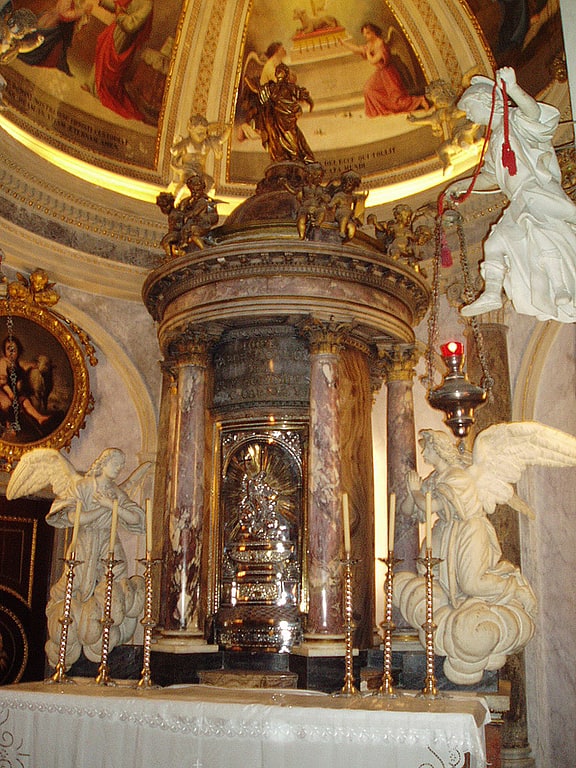
Monument in Cádiz, Spain. The Oratorio de la Santa Cueva is an underground church in Cádiz.
It was restored by the Veracruz-born priest, Don José Sáenz de Santa María, who also commissioned Haydn's The Seven Last Words of Christ for performance in the cave.[12]
Address: Calle Rosario s/n, 11004 Cadiz
Oratorio de San Felipe Neri
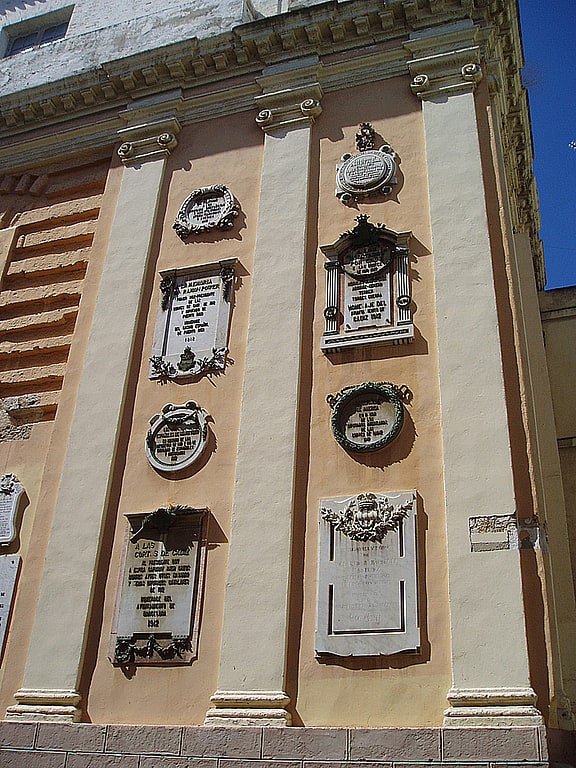
Catholic church in Cádiz, Spain. The Church of Oratorio de San Felipe Neri is a church built between 1685 and 1719, located in Cádiz, Spain. It was declared Bien de Interés Cultural in 1907.[13]
Address: Calle Santa Ines S/N, 11003 Cadiz
Spa of Nuestra Señora de la Palma y del Real
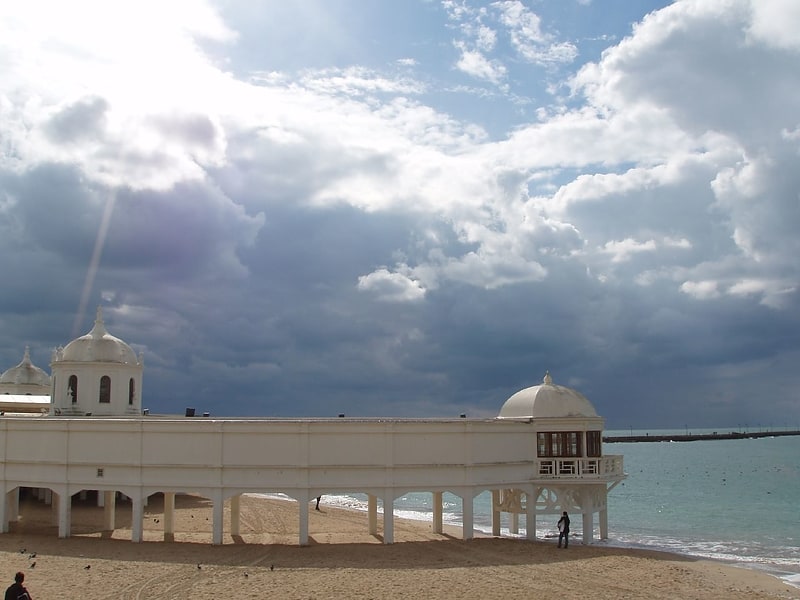
Also known as: Balneario de Nuestra Señora de la Palma y del Real
The Spa of Our Lady of Palma and the Royal is a spa located in Cádiz, Spain. It was declared Bien de Interés Cultural in 1990.[14]
La Caleta

La Caleta is a beach located in the historical center of the city of Cádiz, Spain. It is a natural harbor by which Phoenicians, Carthaginians and Romans penetrated historically. It is the smallest beach in the city, and is isolated from the others.[15]
Convent of Nuestra Señora del Rosario y Santo Domingo
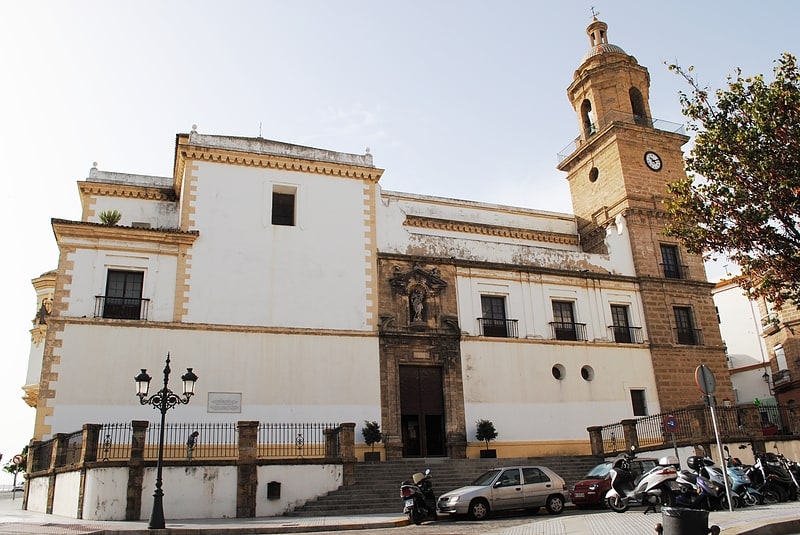
Also known as: Convento de Nuestra Señora del Rosario y Santo Domingo
The Convent of Nuestra Señora del Rosario y Santo Domingo is a convent located in Cádiz, Spain. It was declared Bien de Interés Cultural in 2005.[16]
Address: Calle Santo Domingo s/n, 11006 Cadiz
Ficus macrophylla

Tree
Parque Genovés
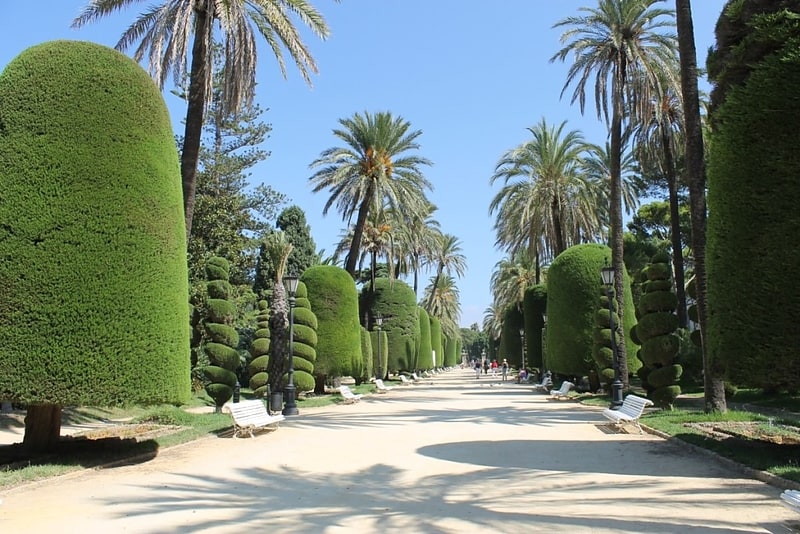
Genovés Park is a historic garden located by the sea in the historic center of Cádiz. It is one of the most outstanding in the city. Its origin dates back to the late eighteenth century, although throughout its history, has undergone several extensions and renovations.
Address: Avenida del Doctor Gomez Ulla s/n, 11003 Cadiz
Hospital de Mujeres

Hospital of the Mother of God from Mount Carmel - a former Carmelite Hospital, currently the seat of the diocese of Cadules and Ceuta.
The Hospital of the Mother of God from Mount Caramel is a baroque building built in the mid -eighteenth century on the initiative of Pedro Luis Gutierrez San Martin from Seville. The hospital was opened on October 16, 1749. It was built in accordance with the baroque manner, with spacious and richly decorated facades, with Tuscan columns, a large staircase and numerous decorative elements. He has a hospital chapel with the main altar and six side chapels. In 1963, due to the lack of funds, Bishop Antonio Añoveros closed the hospital.
Address: Calle Hospital de Mujeres n 26, 11001 Cadiz
Torre Tavira
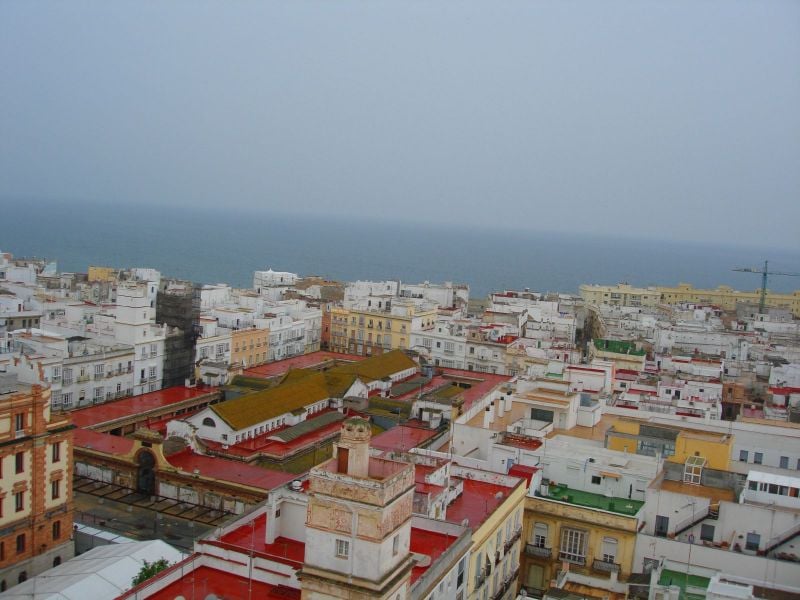
The Tavira Tower is the highest watchtower in the old city of Cadiz, 45 meters above sea level, and the second highest point, only surpassed by the towers of The Cathedral, at 56 m high. It is located in the House-Palace of the Marquises of Recaño, on the corner of the streets Marqués del Real Tesoro and Sacramento, and was built in the eighteenth century in baroque style. Designated the official watchtower of the port of Cadiz in 1778 for being the highest tower, it is named after its first watchman, frigate lieutenant Antonio Tavira.
It currently houses the Camera Obscura, one of the most symbolic tourist attractions of the city of Cadiz, as well as two exhibition halls and a viewpoint, from which you can admire the entire historic center of the city.
The Camera Obscura was inaugurated in 1994 and consists of an optical system that reflects on a circular white screen the scenes taking place outside in real time, during 15-minute sessions. The exhibition rooms show through information panels the development of the city of Cadiz and its history in general and the Tower in particular during the eighteenth and nineteenth centuries. You can also admire the original spyglass and the logbook of the watchman, as well as photographs of the nineteenth century and current photographs that show the changes in the city during the last century.
Address: Calle Marques del Real Tesoro 10, 11001 Cadiz